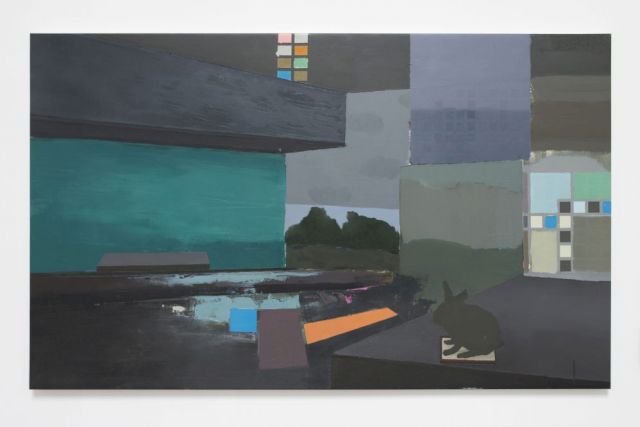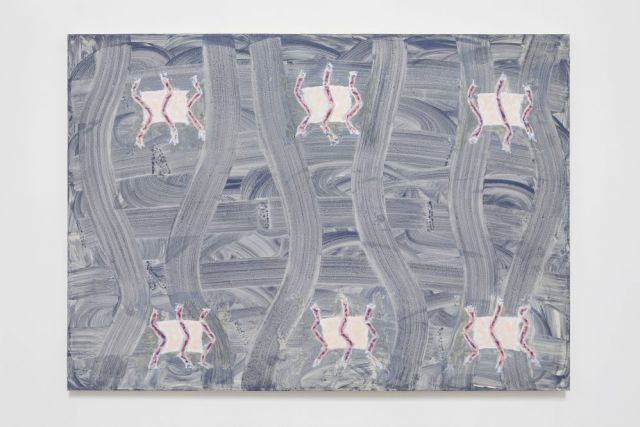Independent Collectors
Transylvanian Visions
A fervent promoter and collector of Contemporary Romanian Art, with a special focus on the artistic phenomenon of the Cluj School.

The collection offers a broad and encompassing panorama of the artistic development that swept over the Transylvanian capital in the last four decades, with prized works by masters such Corneliu Brudascu and Ioan Sbârciu, and several representatives from the younger generations, including Mircea Suciu, Cătălin Petrișor, Oana Farcas, Robert Fekete, Sergiu Toma, Teodora Axente and many others.
The art historical genealogy of Romanian painting is well represented in the collection, since it contains three works by Corneliu Baba (1906-1997) – the most influential Romanian painter of the second-half of the twentieth century. Baba worked in the tradition of the Old Masters, although his art betrays influenced from expressionism, art nouveau, academicism and traces of impressionism. His influence can easily be observed in the work of Corneliu Brudascu in terms of technique and subject matter. After being largely ignored in the past few decades, Brudascu’s key role in the development of Romanian contemporary painting has been finally recognized through the landmark exhibition at Tate Modern London, “The World Goes Pop”, 2015.
Hugo Voeten collected Brudascu’s work long before he gained international recognition. Brudascu’s paintings “Composition II (Ritual)” and “Composition (Angel’s Touch)” – two highlights of the collection – reveal the high level of mastery achieved by the artist in relating the loose application of paint with the visceral evocation of the figure’s corporeal presence. The male bodies that fill Brudascu’s artistic universe are ravaged by guilt and an impending sense of paradise lost, all translated in an un-rival handling of the pictoriality of strong feelings and emotions.
The collection also includes a major work of Ioan Sbârciu – a leading artist from Cluj and the one who created the context of the Cluj School phenomenon. Sbârciu played an essential role as professor at the Art University, being the person who coached and mentored the whole generation of artists associated with the Cluj School. Besides his important pedagogical contribution, Sbârciu is also one of the most outstanding artists of his generation. His series generically entitled Cinder Forest shows not only the trauma of deforestation that affected Transylvania – the region with the highest density of forests in Romania – but also express a radical way of depicting landscape. The large sizes of Sbârciu’s canvases embody a distinct reality that resembles the topography of the region. These paintings are surfaces of materiality that evoke the dynamic between creation and destruction, pain and mystery.
The new generation of artists continued in many ways the local tradition of figurative painting, by infusing it with a critical dose of western conceptualism. Their artistic efforts gained recognition due to program of activities from the Fabrica de Pensule – a former communist paintbrush factory that was transformed into a interdisciplinary cultural space. Fabrica de Pensule is the first collective initiative of this scale in Romania, that includes artists run spaces and studios, galleries, and other organizations active in the fields of theatre, contemporary dance, visual arts, arts in public space, music. This experiment showed that through a close collaboration between artists and organizations, the culture of an entire city and the future of several generations of artists can gain worldwide recognition – to the point where Cluj was nominated as one of the twelve “Art Cities of the Future”.
Elena and Hugo Voeten’s Geel-based collection reveals an insightful understanding of the complex dynamic that characterizes the Cluj School. Both collectors travelled to Cluj, visited the Fabrica de Pensule, and met the artists associated with the movement way before the phenomenon received international media attention. As such, their collection captures the essential characteristic of the Cluj School in terms of conceptual and creative diversity as well as its vibrant intergenerational dialogue.
TEXT BY MARIA RUS BOJAN. CRITIC AND CURATOR, AMSTERDAM





















